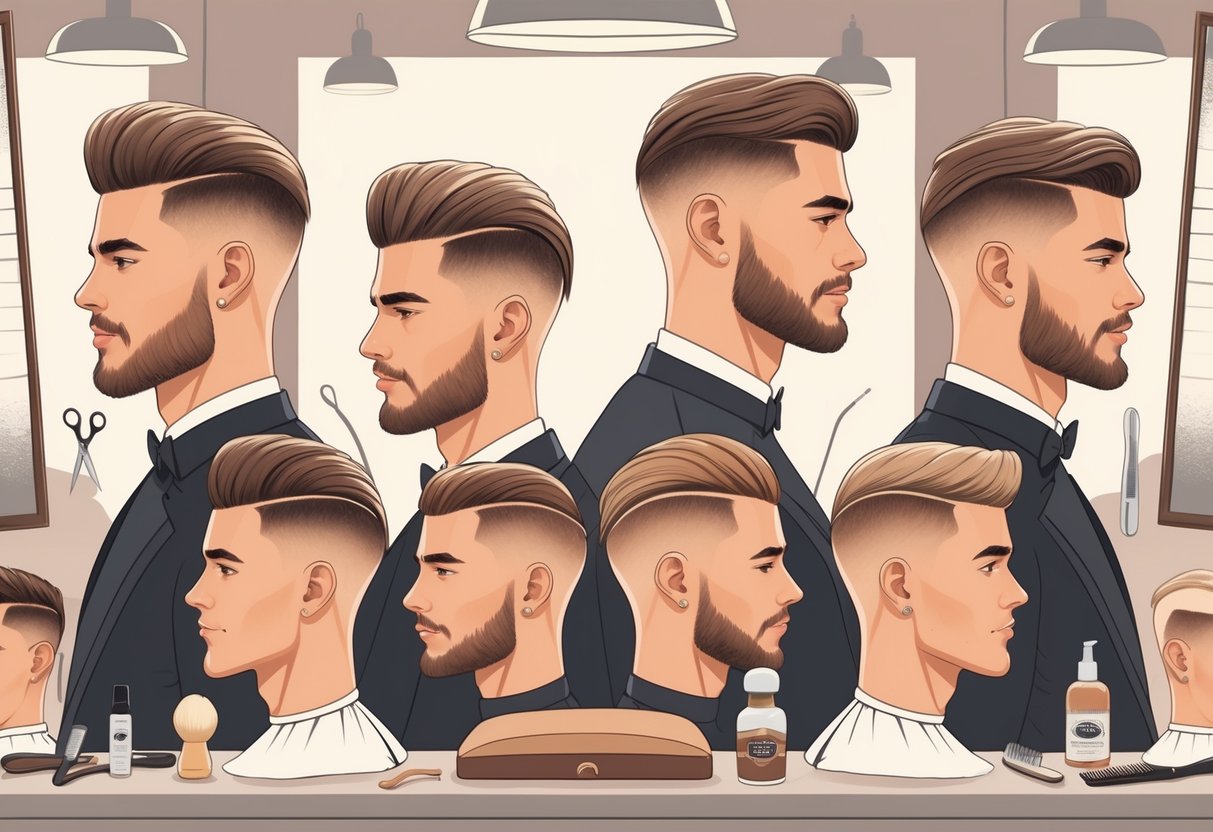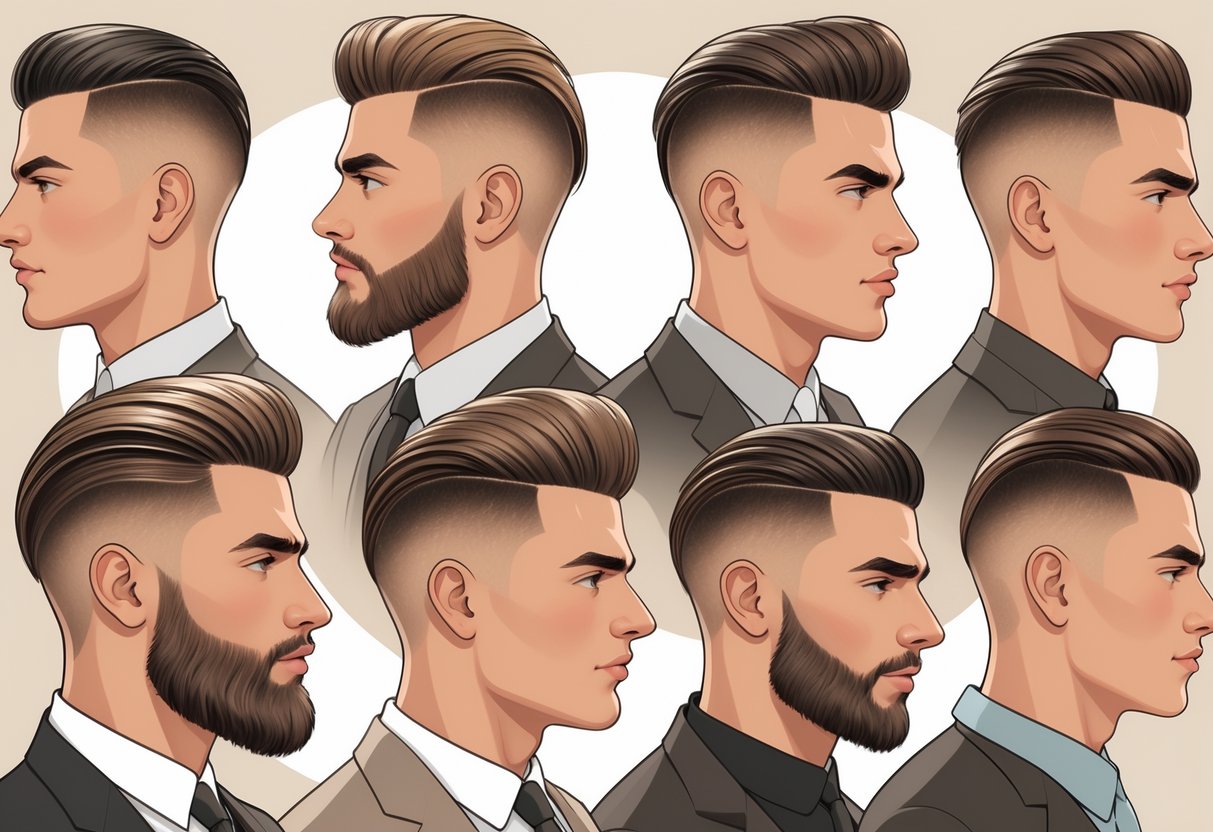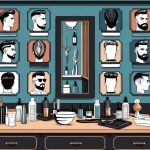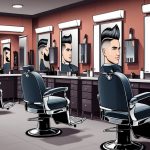
Foundational Styles: The Side Parting
The side parting has remained a go-to choice in classic men’s hairstyles for its versatile look and low-maintenance upkeep.
Key styles under this category combine a strong, clean parting with tailored styling to suit formal, business, and casual settings.
Side Part Comb Over
The side part comb over is recognized for its neat structure and timeless shape. This style features a distinct side parting, with the hair combed sideways and slightly back to add natural volume.
It is suitable for different hair types and face shapes. To achieve a balanced side part comb over:
- Start with damp hair.
- Use a comb to define the parting, typically aligning with the arch of the eyebrow.
- Apply a light to medium hold pomade, distributing it evenly.
- Comb the longer top section over to one side, ensuring the hair lays flat without appearing overly stiff.
Maintenance is straightforward. Regular trims keep the lines sharp and the part defined.
Applying styling product each morning helps lock in shape. Readers can find more inspiration and technique examples for the classic side part comb over in this guide on classic side part hairstyles.
Traditional Slick Back
The traditional slick back relies on the same side part foundation but opts for a sleeker, smoother finish. This style is especially effective for men with straight or slightly wavy hair, giving a neat appearance ideal for professional environments.
To style a traditional slick back:
- Begin with towel-dried hair.
- Work a small amount of strong-hold gel or pomade through the hair.
- Use a fine-tooth comb to pull hair straight back from the side part, smoothing down any flyaways as you go.
For best results, avoid overloading with product to maintain shine without greasiness. Scheduling cuts every 3-4 weeks ensures the slick back retains its refined silhouette.
For additional visual references and helpful techniques, review this resource on classic men’s hairstyles.
Revival Cuts Making a Comeback
Classic men’s hairstyles such as the shag are receiving renewed attention with modern styling methods, textured finishes, and updated barbering techniques. These revival cuts combine vintage appeal with versatility and can be tailored to suit various hair types and lifestyles.
The Shag
The shag is a layered men’s haircut popularized in the 1970s, known for its relaxed, lived-in texture and volume around the crown and sides. This cut features feathered layers, a tousled finish, and is often paired with a soft fringe or bangs.
Recently, the shag has made a comeback as barbers incorporate sharper lines, deliberate texture, and products that enhance natural movement and volume. The modern shag can even be blended with other retro styles, like the mullet, for a unique hybrid cut that emphasizes both style and individuality.
For easy styling, those with curly or wavy hair can use lightweight creams or sea salt sprays. Straight hair benefits from texturizing products and targeted blow-drying with a round brush for added lift.
Regular trims will help maintain the shape and prevent the cut from looking unkempt. The shag’s adaptability makes it a practical choice for anyone seeking a classic, yet trendy look that’s gaining popularity in 2025.
How to Achieve Classic Men’s Hairstyles Easily

Achieving timeless men’s hairstyles starts with the right tools and straightforward techniques. Different cuts—like the pompadour, side part, or buzz cut—require unique approaches to suit hair length, texture, and finish preferences.
Understanding the effect of hair type is key to getting consistent, easy results at home or in the barbershop.
Essential Tools and Techniques
Several indispensable tools make styling classic men’s hairstyles easier and help create a professional finish every time:
- Blow dryer: Essential for adding volume, especially for the pompadour or quiff. Use a medium heat and a round brush to lift hair at the roots.
- Comb or brush: A fine-tooth comb provides the sharp, defined lines needed for side parts and slick backs.
- Clippers: For close cuts like the crew cut or buzz cut, clippers with adjustable guards deliver uniform results.
- Quality styling products: Pomade offers hold and shine for classic slick back styles. Matte clay or paste works well for textured looks like the French crop.
Technique matters as much as the tools. Sectioning the hair before styling, working product evenly from root to tip, and using controlled drying movements all increase precision.
Styling for Hair Types
Choosing the right method depends on hair texture, density, and manageability. Straight hair makes it easy to create structured forms for classic cuts such as the side part or slick back, as hair falls naturally and allows the style to hold with minimal effort.
For curly or wavy hair, a blow dryer with a diffuser helps maintain volume and keeps curls defined. Thicker hair benefits from lighter products to prevent buildup.
Fine hair often needs volumizing mousse or lightweight wax for fullness. Coarse or textured hair may require stronger hold products and more frequent brushing to maintain styles like the pompadour or quiff.
Adjusting technique and product ensures each hair type can achieve iconic looks as seen in guides to classic men’s hairstyles without unnecessary hassle.



